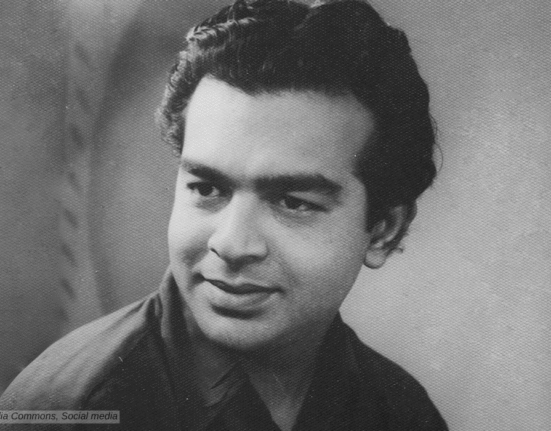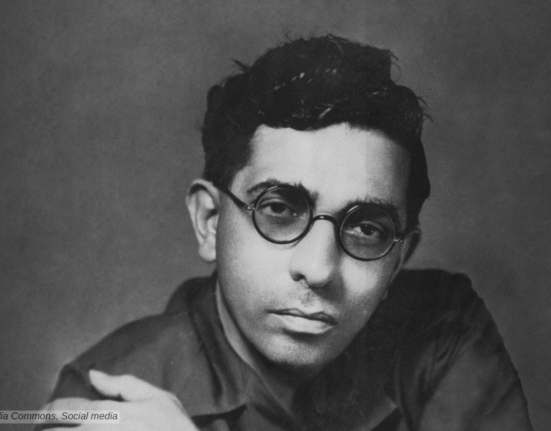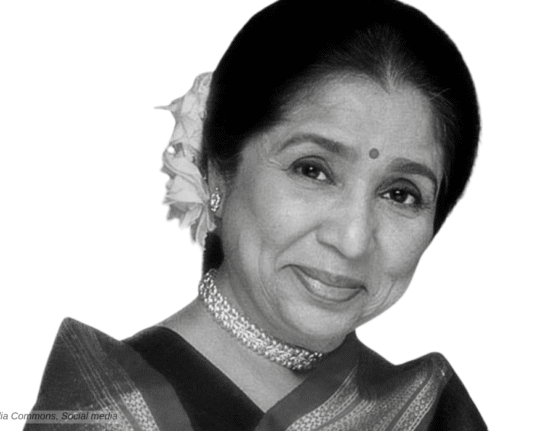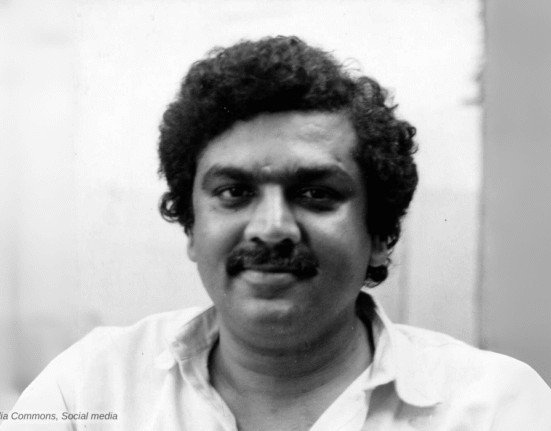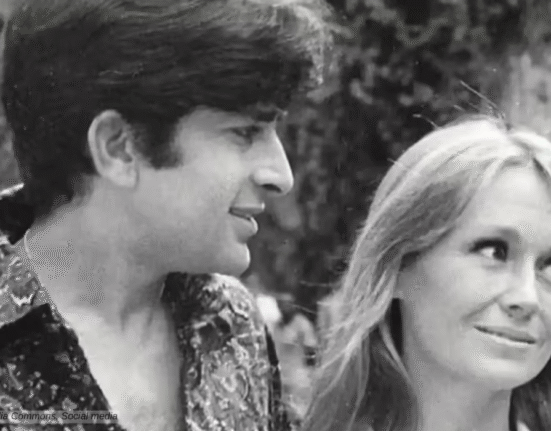Sharmila Tagore, who redefined the term of being a lead heroine in Indian cinema. Fondly called “Kashmir ki Kali,” Tagore stands as one of Indian cinema’s most accomplished actresses, with two National Film Awards, a Filmfare Award, a Filmfare OTT Award, and the Filmfare Lifetime Achievement Award. She has left an indelible mark on Hindi cinema. In 2013, the Government of India recognized her contributions to Indian culture through performing arts with the Padma Bhushan, the country’s third-highest civilian honor.
Human relationships can get awfully demanding and unpredictable. One day you feel one way, the next day you feel something else. That affects relationships. It’s better to spend time with yourself doing the things that you enjoy.
Sharmila Tagore
Early Life and Career
Born on 8 December 1944 into the illustrious Tagore family, a driving force during the Bengali Renaissance. She is a distant relative of the Nobel laureate Rabindranath Tagore. She attended St. John’s Diocesan Girls’ Higher Secondary School and later Loreto Convent in Asansol.
Sharmila Tagore embarked on her acting journey at the age of 14 with Satyajit Ray’s acclaimed Bengali epic drama “Apur Sansar” (The World of Apu, 1959). Ray again cast her in his next “Devi (1960),” a poignant exploration of religious fanaticism. Tagore’s portrayal of Doyamoyee, a young woman believed to be an incarnation of the goddess Kali, was both haunting and powerful.
Sharmila Tagore—Kashmir Ki Kali
Tagore’s career further expanded when she ventured into Hindi cinema with Shakti Samanta‘s romance “Kashmir Ki Kali” (1964). Her role as Champa, a beautiful and innocent Kashmiri girl, opposite Shammi Kapoor, was widely appreciated. The film’s success catapulted her to stardom and established her as one of the leading actresses of Hindi cinema.
Directed by Satyajit Ray, “Nayak (1966)” featured Tagore as Aditi Sengupta, a journalist who interviews a famous film star during a train journey. In Seemabaddha (1971), another film directed by Satyajit Ray, Tagore played the role of Tutul, a young woman who becomes disillusioned with the corporate world.
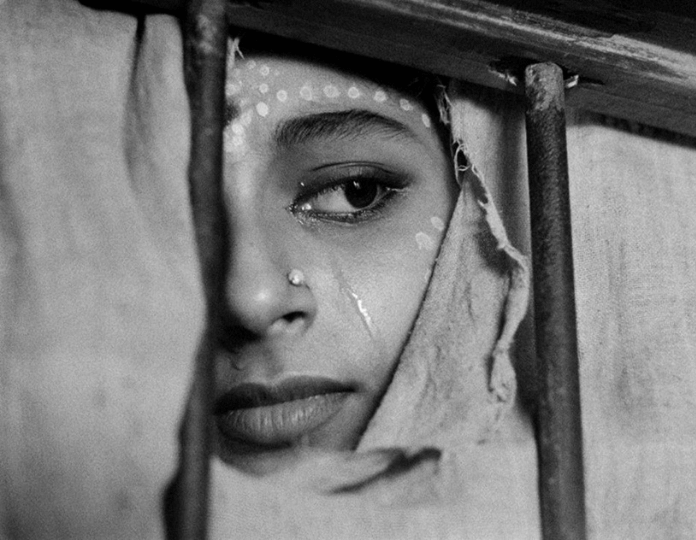
Her collaboration with Ray extended to “Aranyer Din Ratri (1970),” translated as “Days and Nights in the Forest.” The film is an adaptation of the novel by Sunil Gangopadhyay. Ray famously used the carnivalesque literary technique. The narrative revolves around four friends from the city who embark on a journey to the forests of Bihar, seeking respite from their urban existence.
The characters, each from different societal strata, find themselves in the midst of a tribal world, which challenges their perceptions and confronts their inner turmoil. The film delves into themes of friendship, bourgeois moralities, societal norms, and the human condition, all set against the backdrop of the enigmatic forest.
Sharmila Tagore—The Star Performer
One of her most important roles came in “Anupama” (1966), directed by Hrishikesh Mukherjee, which delves into the complex relationship between a father and daughter, exploring themes of love and neglect. It’s noted for its lyrical storytelling and beautiful songs. The film also had powerful performances by Sharmila Tagore, Dharmendra, Tarun Bose, Shashikala, and Deven Verma.
Directed by Shakti Samanta, “Aradhana (1969)” with Rajesh Khanna, is one of Tagore’s most iconic films. Her portrayal of Vandana Tripathi, a woman who faces numerous challenges after the death of her lover and the father of her child, was both powerful and emotionally resonant. The film was a massive hit and earned Tagore the Filmfare Award for Best Actress.
Some of her other memorable films include Waqt (1965), Devar (1966), An Evening in Paris (1967), Aamne Saamne (1967), Mere Hamdam Mere Dost (1968), Satyakam (1969), Safar (1970), Mere Humsafar (1970), My Love (1970), Chhoti Bahu (1971), and Dastaan (1972), among others.
One of her other memorable roles came in Shakti Samanta’s classic “Amar Prem (1972),” where Tagore played the role of Pushpa, a courtesan who forms a deep bond with a wealthy patron and an abused boy. Her performance was widely praised for its depth and sensitivity. She then starred in hits like Raja Rani (1973), Daag (1973), and Amanush (1974).
Experiments
From the mid-70s, Sharmila starred in many experimental films. In 1975 she starred in the thriller Faraar (1975) and also did the cult comedy Chupke Chupke (1975). Directed by Gulzar, “Mausam (1975)” showcased Tagore’s versatility as an actress. She played dual roles in the film, portraying both Chanda and Kajli, two very different women. Her performance earned her the National Film Award for Best Actress. She then acted in Anand Ashram (1977), Griha Pravesh (1979), Desh Premee (1982), Durdesh (1983), and many more.
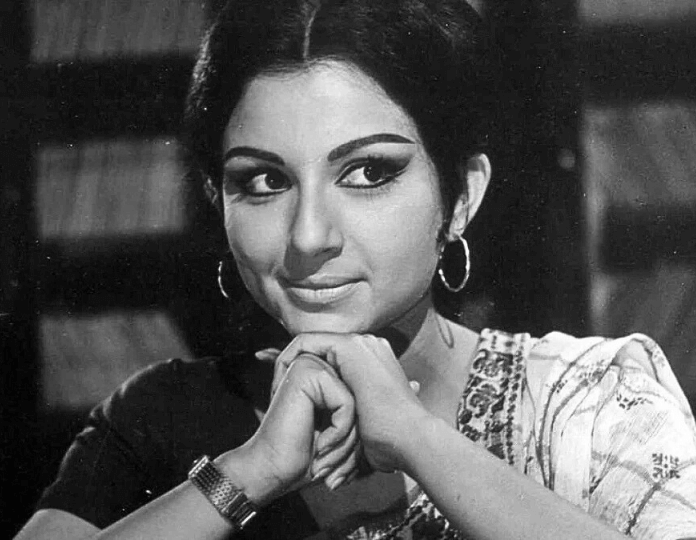
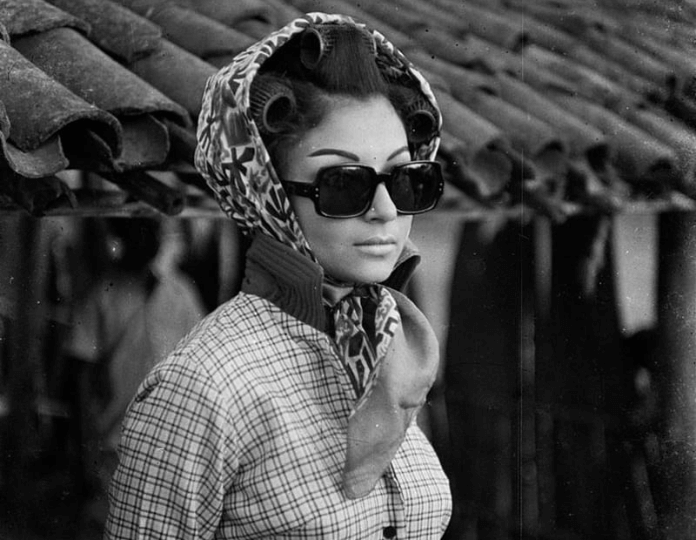
She again worked with Gulzar in the 1982 film “Namkeen,” which also stars Sanjeev Kumar, Shabana Azmi, Kiran Vairale, and Waheeda Rehman in the lead roles. The film is based on a story by Samaresh Basu and explores the lives of four women who struggle to survive in a remote village in Himachal Pradesh. In the film, Tagore portrays the oldest daughter and titular character, “Nimki,” and gets widespread acclaim for her grounded and sensitive portrayal of a woman trapped in circumstances beyond her control.
Later Career
In the 1980s she transitioned into character roles, and her cinematic journey continued with intermittent appearances in films like Sunny (1984), New Delhi Times (1986), Swati (1987), Doorie (1989), Mira Nair’s Mississippi Masala (1991), Aashik Awara (1993), Mann (1999), Viruddh (2005), Eklavya: The Royal Guard (2007), and Break Ke Baad (2010).
Apart from Hindi, she continued to act in many memorable and acclaimed Bangla films, such as Haridas Bhattacharya’s “Sesh Anka (1963),” Ajoy Kar’s “Barnali (1963),” Tapan Sinha’s “Nirjan Saikate (1965),” Uttam Kumar and Pijush Basu’s “Kalankini Kankabati (1981),” Prabhat Roy’s “Protidan (1983),” Goutam Ghose’s “Abar Aranye (2002),” Rituparno Ghosh’s “Shubho Mahurat (2003),” and Aniruddha Roy Chowdhury’s “Antheen (2009).”
Besides her film career, Sharmila also acted in the TV series Katha Sagar (1986), Rishte (1994), and Zindagi (1999).
After a 13-year hiatus, she made a triumphant return with the drama Gulmohar (2023), winning the Filmfare OTT Award for Best Actress Critics: Web Original Film at the 2023 Filmfare OTT Awards.
Personal Life
Sharmila married legendary cricketer Mansoor Ali Khan Pataudi (Tiger Pataudi) of the Pataudi Family in 1968, and they blessed the world with three children—actors Saif, Soha, and Saba.
Contrary to the belief that audiences don’t accept married heroines, Sharmila Tagore breaks the ceiling by marrying at the peak of her career and goes on to become one of the greatest actresses of her time. She also became the mother of three children while remaining at the top of her career. She was feisty, bold, and never shied away from experimenting—whether playing mother to Rajesh Khanna while in her twenties or donning a 2-piece bikini, she was the epitome of boldness.

Beyond acting, Tagore served as the chairperson of the Central Board of Film Certification from October 2004 to March 2011. She also served as a UNICEF Goodwill Ambassador. In 1999, she was honored by the French government with the “Insignes de Commandeur de Ordre des Arts et des Lettres.” She also gets an honorary Doctorate of Arts from Edinburgh University in 2012
Sharmila Tagore on IMDB




